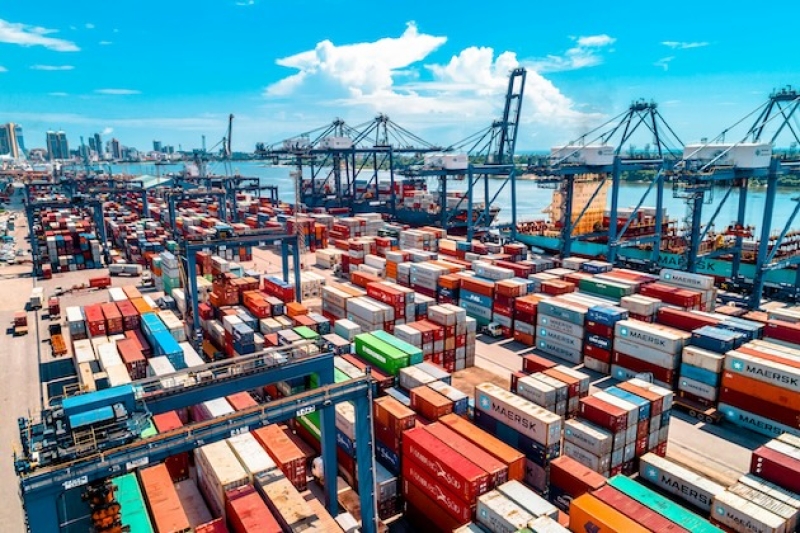- Dhaka's air quality turns ‘very unhealthy’ on Monday |
- Rohingya Pin Hopes on UN Genocide Hearing for Justice |
- Trump Says Open to Meeting Venezuela’s Interim Leader |
- Fourth Palestinian baby freezes to death in Gaza amid winter crisis |
- Prof Yunus to focus on digital health, youths, ‘Three Zeros’ |
Technology: A Key to Boosting Trade in Least Developed Nations

Least Developed Countries account for less than 1 percent of world trade.
Artificial intelligence and the use of frontier technologies are already transforming trade and boosting prosperity, particularly for developed and certain developing countries. This ranges from the digital exchange of documents and the digitalization of trade processes to leveraging online platforms that fast-track cross-border trade.
The rapid adoption of new technologies will further consolidate the dominance of world trade by developed economies, which currently account for roughly 74 percent of global trade, according to the United Nations Conference on Trade and Development (UNCTAD). The world’s 44 Least Developed Countries (LDCs), with an estimated population of 1.4 billion people, are seeing a different trajectory altogether. According to the World Trade Organization, they account for less than 1 percent of the world’s merchandise trade. LDCs continue to reel from the relentless onslaught of bad news, including rising protectionist barriers.
Deodat Maharaj, Managing Director of the United Nations Technology Bank for the Least Developed Countries, stresses that the challenges faced by LDCs need urgent attention.
UNCTAD has estimated that tariffs on LDCs will have devastating consequences, potentially leading to a 54 percent reduction in exports from the world’s poorest countries.
In this dire situation, exacerbated by declining overseas development assistance, what can an LDC do to survive in this difficult trade environment?
To start with, they must continue to advocate globally for fairer terms of trade. At the same time, they need to be more aggressive in addressing matters within their control. Otherwise, the status quo will leave their people in a perpetually disadvantaged situation. Imagine paying three times more than your competitors to ship a single crate of goods across a border. For millions of entrepreneurs in the world’s LDCs, it is the everyday cost of doing business. Technology offers a way out in reducing these high costs.
Indeed, when the international community gathered in Seville for the Fourth International Conference on Financing for Development (FfD4) in July 2025, one truth stood out: Technology is no longer a luxury—it is a prerequisite for effective participation in global trade. The outcome document made it clear that for the world’s 44 LDCs, bridging infrastructure gaps, building domestic technological capacity, and leveraging science, technology, and innovation are vital to unlocking trade opportunities.
So, given the challenges and opportunities, what are the core elements of an action agenda for LDCs to leverage trade and generate jobs and opportunities for their people?
Firstly, there is a need to pivot to digital solutions, which can significantly reduce trade costs and open new markets. According to the World Bank, paperless customs and single-window systems have been proven to cut clearance times by up to 50 percent, reducing bureaucracy that stifles commerce. In Benin, automating port procedures reduced processing time from 18 days to just three days. E-commerce platforms, when paired with secure payment systems and targeted training, have shown remarkable potential.
Secondly, invest in digital infrastructure. The data suggest that LDCs still have a lot of catching up to do. The solution is for development partners and international financial institutions to allocate more resources in this area, with a fixed percentage—say, 15 percent—of a country’s portfolio dedicated to boosting digital infrastructure.
Thirdly, focus on value addition and reduce dependence on the export of raw commodities. This in turn requires human resource capacity to spur innovation and creativity. Boosting investment in research and development can pay rich dividends. According to the World Economic Forum, LDCs invest less than 1 percent of GDP in research and development, compared to developed countries. The Republic of Korea invests 4%.
Finally, for LDCs to enter the technological age, their businesses must take the lead. It is difficult to do so in some countries like Burundi, where internet penetration is just 5 percent of the population. The average internet penetration is approximately 38 percent. So, in addition to digital infrastructure, support must be provided to micro-, small, and medium-scale enterprises to benefit from the opportunities provided by technology to boost trade, thereby creating jobs and opportunities. This includes the establishment of incubators to support the business sector, boosting their technological capacities to trade, profile their businesses on digital platforms, and help them deliver services created by the digital economy. Rwanda has been a pioneer in this regard.
Of course, technology alone will not address all the challenges faced by LDCs. However, by delivering cost-efficient solutions, it can help level the playing field and drive transformation. It is time for the international community and development partners to back their words with action in helping LDCs advance this agenda. Since LDCs represent an emerging market of 1.4 billion people, when they rise, everyone else will rise with them.
Deodat Maharaj, a national of Trinidad and Tobago, is the Managing Director of the United Nations Technology Bank for the Least Developed Countries.

